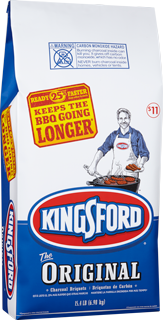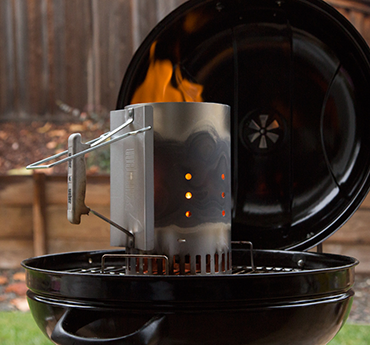
Fire up your kebabs with America’s favorite—Kingsford® Original Charcoal.
See detailsCooking meat on a stick over live fire is the most primal, ancient way of cooking. Primitive cultures cooked meat on spears. Travelling armies cooked meat on swords. Today, this method of cooking can be found in just about every culture. In the Middle East these meats are called kebabs. In Southeast Asia they are called satay. In France they are called brochettes. It’s a universally delicious and easy way to cook meat, vegetables, and sometimes fruit all together.

It all starts with a stick.
You can purchase high-end kebab sticks made of metal or stainless steel. They are re-useable and easy to clean and they last a lifetime. However, most people just pick up a bag of bamboo skewers at the grocery store. Skewers win out in terms of price and convenience, since they are disposable. However, because they are made of wood, they will catch fire. This means your kebabs could literally fall apart on the grill. To prevent this, all you need to do is soak the bamboo skewers for an hour or so in water. They still might discolor and perhaps catch fire, but the time it takes for all the water to evaporate is generally enough to ensure the kebabs are cooked through.

The building blocks of a kebab.
Beef, pork, lamb, chicken, fish, and shrimp are all ideal candidates for making kebabs. Regardless of which meat you choose, size matters. To prevent dry, chewy kebabs, use larger chunks of meat—at least 1- to 1½-inch chunks. Larger meat chunks will stay moister during cooking and make for a juicier kebab.
Seasoning is equally important. Beef, pork, and chicken take nicely to wet marinades. Soak the meat chunks for at least an hour prior to assembling the kebabs, or as long as overnight. With seafood, you have to be careful with marinades that contain a high acid content from vinegar or citrus juice. Do not marinate longer than 15 minutes or else the marinade will start to cook the flesh of the seafood. Or try a simple drizzle of olive oil and any number of commercially available dry seasonings.
The last component is the vegetables. It’s important to select and cut vegetables at a similar size as the meat so that everything cooks at the same rate. For beef, pork, lamb, and chicken you can’t go wrong pairing with peppers, onions, mushrooms, and squash. You can also add fruit like pineapple and peaches. When making seafood kebabs, select vegetables that cook quickly, since most seafood cooks quickly as well.

It’s best to alternate between meat and vegetable types to ensure even cooking. And don’t try to squeeze too many items on the skewer. Crowding creates problems such as unevenly cooked or raw areas of the meat. However, if the ingredients are too loose, they can dry out. The perfect kebab has enough ingredients on it so they touch, cook evenly, and remain juicy.

Time to grill.
When it comes to cooking your kebabs, a two-zone fire is essential. You will sear the kebabs directly over the coals on the hot side and let them finish cooking through on the cool side. This is critical when using bamboo skewers to avoid flare-ups. If your sticks do catch fire during searing, just move them to the cool side and put the lid on to snuff the flames. Kebabs work best in smaller batches. Rotating them all can take longer than you might expect, so grill fewer at a time for better results. Check out our complete, step-by-step instructions on how to expertly grill beef kebabs, chicken kebabs, and shrimp kebabs.

The centerpiece of a lighter gilled meal
As opposed to a heavy, 24-ounce T-bone steak, kebabs make for a lighter grilled meal. Combining vegetables and meats, kebabs pair nicely with side dishes like leafy green salads, vegetables, and starches like rice or pasta. Since they cook relatively quickly, they’re perfect for a light, summer weeknight meal. They’re a nice change of pace from the usual grilled fare and downright fun to make and eat.
Once you have mastered the basic technique for making kebabs, you can get very creative with specific recipes from around the world. You can choose from the spice of Turkish or Middle Eastern-style kebabs. Or try the exotic flavor profile of Southeast Asia in satay, which is often paired with a peanut dipping sauce. Grilled meat on a stick can be found in just about every country, so the recipe possibilities are endless.


